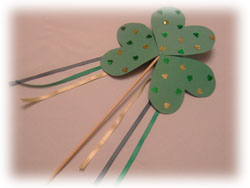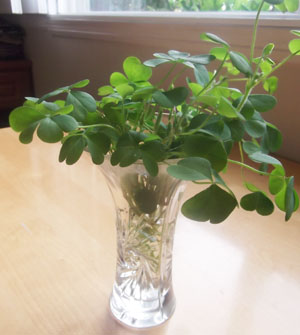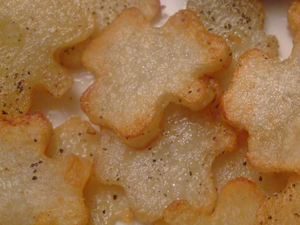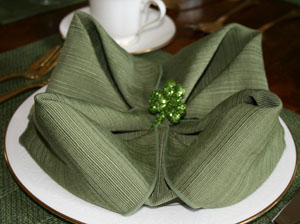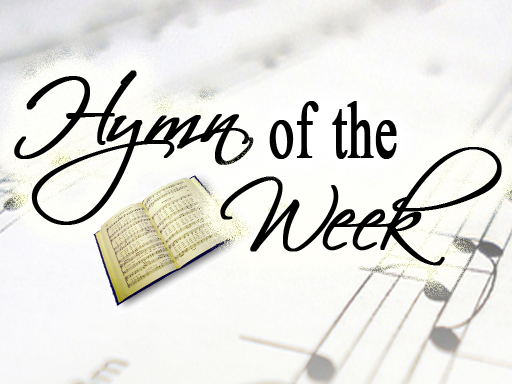Shamrocks
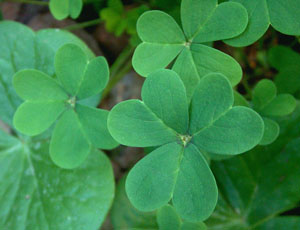 Tradition holds that Patrick used the small, three-leaved plant called the shamrock (or clover) to explain the Trinity to the Irish people. Each leaf, being separate and distinct, represented the Father, the Son, and the Holy Spirit respectively. The stem represented the Godhead itself from which they all proceeded. Some say that the shamrock was first used by St. Patrick in an effort to convert the Irish king Leary to Christianity.
Tradition holds that Patrick used the small, three-leaved plant called the shamrock (or clover) to explain the Trinity to the Irish people. Each leaf, being separate and distinct, represented the Father, the Son, and the Holy Spirit respectively. The stem represented the Godhead itself from which they all proceeded. Some say that the shamrock was first used by St. Patrick in an effort to convert the Irish king Leary to Christianity.
Interestingly, the number three seems to have held special meaning in Celtic tradition even before Christianity. Scholars believe that the shamrock was used in ancient fertility rituals in which it represented a triad of goddesses. The green leaves were burned and the ashes were sprinkled over fields to promote growth (Robert J. Myers, Celebrations).
Patrick’s use of the shamrock was ingenious. If in fact the Irish associated it with pagan goddesses, Patrick used it to explain the superiority of the one true God who exists as three different persons.
The shamrock, Ireland’s national flower, which grows green and in abundance all year long, is a regular reminder of it’s Creator and the beautiful mystery of the Trinity.
For more information about the shamrock, see a short video on History.com.
This page was created by:

Back to main St. Patrick’s Day Symbols page.
We welcome your ideas! If you have suggestions on how to improve this page, please contact us.
You may freely use this content if you cite the source and/or link back to this page.
